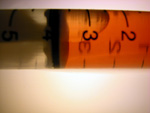 HIV is a worldwide epidemic. But there may be hope for those affected with this killer disease.
HIV is a worldwide epidemic. But there may be hope for those affected with this killer disease.
In 1981, men with symptoms of a unknown disease were first treated in Los Angeles and New York. The men had an unusual type of lung infection and rare skin tumors called “Kaposi’s sarcomas.”
By 1983, researchers in the United States and France discovered that something was causing the immune system to break down. The disease became known as autoimmune deficiency syndrome, or AIDS. They went on to discover that a virus causes AIDS, now known as the human immunodeficiency virus (HIV). HIV is what is known as a “retrovirus”. A retrovirus is different from a regular virus, because it reproduces by transcribing itself into DNA.
As scientists continued to learn more about AIDS, they eventually figured out that patients seemed to have a severe reduction in a type of cell called CD4. CD4 T cells, as they are known as in medical circles, are found in your blood and they are an important part of your immune system. In short, these cells help your body fight infections.
A cure for HIV has eluded medical science and the disease has spread to most parts of the world, with parts of Africa being particularly devastated. Just last week, however, scientists at the Gladstone Institute of Virology and Immunology in San Francisco may have made a major breakthrough. A research team has discovered how HIV triggers the death of CD4 T cells.
After conducting research, scientists noticed that the HIV virus actually enters CD4 T cells that are destined to die. The virus then starts to make a DNA copy of a cell’s RNA, a process called “reverse transcription.” However — and this is the key part — this process does not work well in the majority of these cells and the incomplete DNA intermediates that accumulate in the cell are sensed and trigger the cells to “commit suicide” in an attempt to protect the body.
The dying CD4 T cells release proteins called “cytokines,” which cause inflammation and attract healthy immune cells, which in turn prompts more infection and immune cell death, creating a vicious circle. Eventually, the problems caused by this circular game of death and attraction amongst cells become very serious indeed.
The research team says the findings reveal a completely unexpected behavior for CD4 T cell death during HIV infection. The results show how a natural cellular defense normally used by the body to repel foreign invaders goes awry in HIV infection, resulting in a huge loss of CD4 T cells. If left untreated, this process eventually causes AIDS.
Understanding the HIV process could eventually lead to a potential treatment or vaccine. This is truly an amazing discovery and one we’ll keep an eye on for the future.
